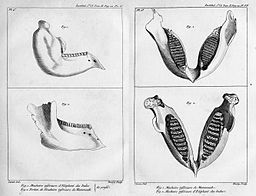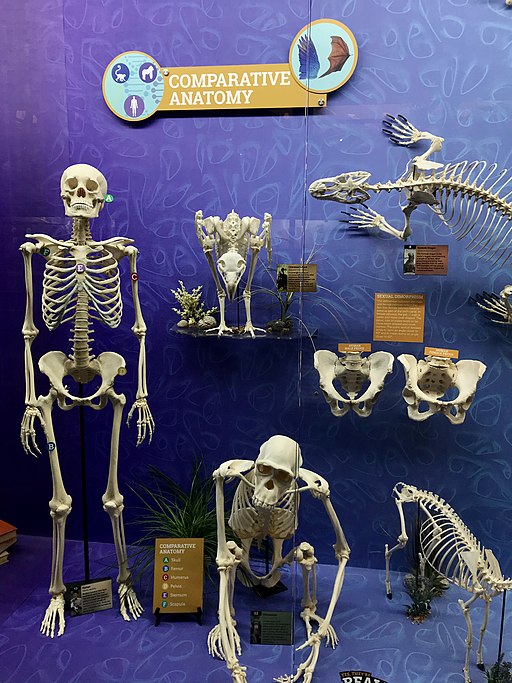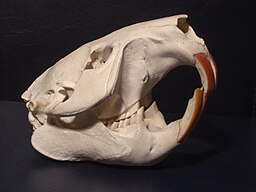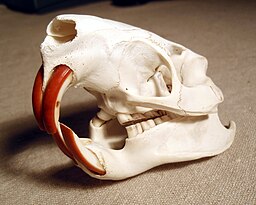Comparative Anatomy
Georges Cuvier was a French naturalist and zoologist who utilized the idea of comparative anatomy to establish the field of paleontology. He initially observed that features found in fossils could indicate shared function and relatedness between these features. He illustrated that African and Asian elephants represented 2 distinct species. Furthermore, he identified mammoth fossils as distinct separate species from living elephants.

Cuvier supported the idea of special creation to describe the origins of all life on Earth and harshly criticized transmutation as a means for various life forms to exist. Despite this, his use of comparative anatomy later provided crucial evidence that supported transmutation. Specifically, the ideas of homologous and analogous structures. With homologous structures, similar structures appear between similar species despite function and overall structure of those parts. With analogous structures, similar structures reflect a shared function due to the environment as opposed to a shared ancestry. This similarity of structure due to function and environment is referred to as convergence.

The similarity between the gross structure of the bodies of sharks and dolphins is related to the aquatic environment, but their fins are derived from disparate structures.
The case of 2 skulls
Two skulls are presented below. Both skulls have similar features.


Both skulls show very large teeth at the front of the mouth followed by a handful of flat grinding teeth in the rear of the mouth. Overall structure of these two skulls is very similar. To the untrained eye (and without any size reference) we could assume that they might even be from the same species.
- Are these 2 skulls the same species of organism?
- What are the supporting features that indicate that they belong to the same species?
- If we look carefully at the dentition (teeth), do we learn about the the relatedness of the skulls?
- What might we assume about diet by looking at the teeth from these skulls? Describe the teeth and identify what they would be used for.
What we notice immediately are the very large teeth at the front of the skulls. We might also notice further back in the mouth, the presence of very flat looking teeth.
Adaptation
The teeth from the 2 skulls indicate that they might be specialized for gnawing. In fact, the 2 skulls are clearly classifiable as rodents!
- Compare the 2 teeth in the front of your mouth (incisors) to the ones in the skulls
- While they are greatly different in size, do these teeth have a similar function?
As it turns out, the left skull actually belongs to a beaver and right skull belongs to a nutria.
Beavers are anthropomorphically characterized as industrious. They are large, semi-aquatic rodents that are known for their behavior of building dams in wetlands. Nutria are also semi-aquatic rodents, but they are smaller than beavers. While nutria have some similar features to beavers, nutria have long rat-like tails instead of the long flat paddled tail of the beaver.


Comparative anatomy using fossils is limited by the fact that soft tissue doesn’t fossilize readily. Looking at the living organisms, we can see that both species have webbed hind feet.
- Is this a common feature to all rodents?
- Swans also have webbed feet. Does this mean they are closely related?
- What does it mean if we decide that swans are not closely related?
Beavers occur naturally in the northern hemisphere while Nutria occur naturally in the southern hemisphere. Just like another invasive rodent species, nutria also exist in North America because they were introduced here.
- If beavers and nutria have similar structure and adaptations to a specific environment, would we expect them to compete?
- Would you expect the beaver to succeed in the natural environment of the nutria?





